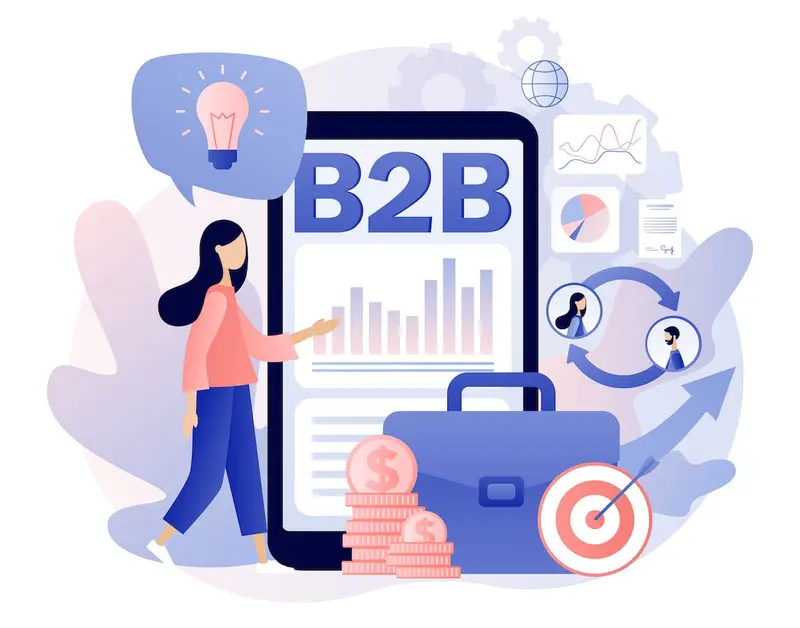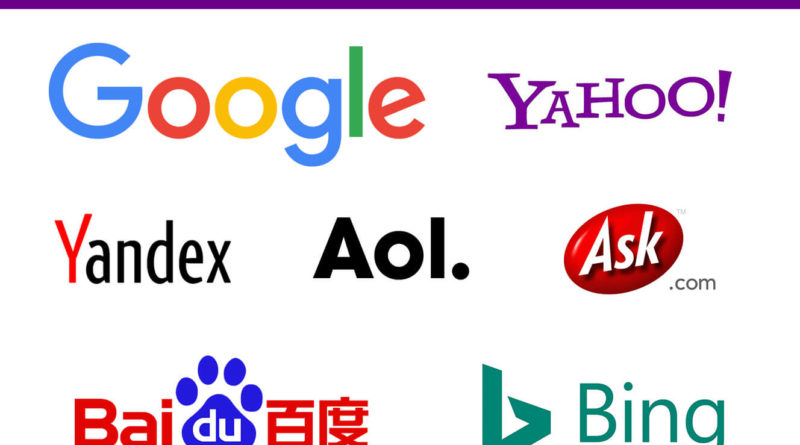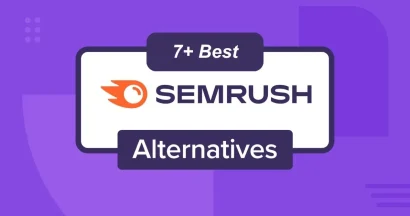B2B companies face unique challenges when it comes to search engine optimization. Unlike B2C businesses that can rely on flashy visuals and emotional appeals, B2B organizations must establish authority, build trust, and address specific pain points of business decision-makers. Content marketing has become essential in this process, serving as the backbone of effective B2B SEO strategies and why it’s so important to hire a top digital marketing agency.
This article examines how content marketing and SEO work together in the B2B space. Read on to get practical insights for companies looking to improve their online visibility and generate quality leads.
Why Content Marketing Matters for B2B SEO?

Search engines have one primary goal: to provide users with the most relevant, valuable information for their queries. For B2B companies, this creates both a challenge and an opportunity.
The challenge lies in the complexity of B2B products and services, which often require detailed explanation and context. The opportunity exists because businesses that create informative, authoritative content addressing specific business problems can rank well for valuable search terms.
A professional B2B SEO agency, such as SeoProfy, can fill this gap with content marketing by:
- Creating opportunities to rank for industry-specific keywords
- Building authority through helpful, expert resources
- Answering potential customers’ questions at different buying stages
- Providing link-worthy material that boosts domain authority
- Increasing time-on-site and reducing bounce rates.
The B2B Buyer’s Journey and SEO
B2B purchases typically involve longer decision-making processes with multiple stakeholders. A well-planned content strategy addresses each stage of this journey:
1. Awareness Stage
At this stage, potential clients recognize they have a problem but may not know what products or services could solve it. They use search engines to research their issues with broad queries.

SEO content types that target people at this stage include:
- Industry reports and original research
- Educational blog posts
- Explainer articles and videos
- Problem-focused white papers.
For example, a marketing automation company might create content around “how to scale marketing operations with limited resources” rather than immediately pushing their product.
2. Consideration Stage
Buyers now understand their issue and are researching potential solutions. They use more specific search terms related to solutions and comparisons.
Types of content that could reach people at this stage are:
- Solution comparison guides
- Case studies
- Expert webinars
- Detailed how-to content.
3. Decision Stage
The prospect has identified potential solutions and is now evaluating specific vendors or products.
You could reach them with the following types of content:
- Product comparison guides
- Implementation guides
- Client testimonials
- Pricing and ROI calculators.
Each stage requires different keywords and content formats. A comprehensive SEO strategy that captures traffic at all points in the buying journey should cover all of them.
Key Content Types for B2B SEO Success
Let’s review the types of articles and pages you can publish to attract more clients with B2B SEO.
Long-Form Educational Content
Long-form content (typically 1,500+ words) performs well in search rankings for several reasons:
- It thoroughly addresses topics, satisfying search intent.
- It naturally includes related keywords and semantically connected terms.
- It tends to earn more backlinks when it serves as a definitive resource.
Case in point: HubSpot’s comprehensive guides often exceed 3,000 words and rank in top positions for competitive terms like “inbound marketing” and “lead generation.”
Case Studies
Case studies serve dual purposes for B2B SEO:
- They target specific problem-solution keywords.
- They demonstrate real-world application and results.
How do you optimize case studies for SEO? Here are a few tips:
- Structure them with clear headings.
- Include industry-specific statistics and metrics.
- Tag them appropriately for industry, company size, and problem type.
Technical Documentation and Resources
B2B purchases often require technical validation. Creating searchable, well-organized technical content helps:
- Attract technical decision-makers
- Answer specific implementation questions
- Rank for long-tail technical queries.
Companies like Stripe and AWS excel at creating developer-friendly documentation that serves as both a product resource and an SEO asset.

Content Distribution: Amplifying SEO Impact
Creating great content is only half the battle. Distribution is equally important for SEO success, and here’s how you can do it.
Strategic Internal Linking

Internal links help search engines understand content relationships and site structure. For B2B websites, consider the following approaches:
- Link from high-authority pages to strategic content.
- Create topic clusters around core themes.
- Use descriptive anchor text that includes target keywords.
Earned Media and Backlinks
High-quality backlinks remain crucial for SEO. Content marketing creates opportunities for natural link building through:
- Original research and data that others cite
- Expert opinions that industry publications reference
- Useful tools and resources that partners link to.
Social Amplification
While social signals aren’t direct ranking factors, posting your content on social media increases its visibility, leading to:
- More potential backlinks
- Extended content lifespan
- Increased brand recognition.
Measuring Content Marketing Impact on SEO
Effective B2B content marketing for SEO requires ongoing measurement and refinement:
Key Performance Indicators
Track these metrics to understand the content’s SEO impact:
- Organic traffic growth to content pages
- Keyword rankings for target terms
- Backlinks and referring domains
- Time on page and bounce rates
- Conversion rates from organic traffic.
Attribution Models
Since B2B sales cycles are longer, multi-touch attribution models help track how content influences the customer journey.
- First-touch attribution shows which content drives discovery.
- Last-touch attribution identifies closing content.
- Linear models distribute credit across all touchpoints.
Content Optimization Best Practices for B2B SEO
What is the best way to optimize B2B content to please both your prospects and search engines? Although there’s no one-size-fits-all approach, several tactics prove to be useful universally.
Target the Right Keywords

B2B keyword research differs from B2C. Here’s how you can find the right terms:
- Focus on industry terminology and specific pain points.
- Target longer, more specific search phrases.
- Include job titles and role-specific terms.
For example, “enterprise data management for healthcare” rather than just “data management.”
Optimize for Featured Snippets
Featured snippets are particularly valuable in B2B search, where users seek direct answers to specific questions. Target them with these tactics:
- Structure content with clear question-and-answer formats.
- Use concise definitions and explanations.
- Implement appropriate schema markup.
Update Content Regularly
Search engines favor fresh, updated content. The following strategies are a must for B2B companies:
- Audit existing content quarterly.
- Update statistics and examples regularly.
- Expand successful content with new information.
- Consolidate underperforming pieces on similar topics.
Common B2B Content Marketing SEO Mistakes
These methods might seem quicker to implement or cost-efficient, but they can really hurt your marketing efforts.
Neglecting Technical SEO
Even excellent content won’t rank if technical issues exist. That’s why you need to ensure mobile responsiveness for all content, optimize page speed for resource-heavy content, fix broken links and redirect issues, and implement proper canonical tags for syndicated content.
Creating Generic Content
B2B markets are specific. Generic content fails to target the right search intent, address specific pain points, and demonstrate your industry expertise. Investing in high-quality content that is useful for your audience is critical for long-term success.
Focusing Only on Top-of-Funnel Content
While awareness content attracts traffic, a complete B2B SEO strategy needs content for all funnel stages to convert visitors to leads. Create pages or blog posts that directly present the benefits of your products and services and include links to them from other pieces.
Wrapping Up
Content marketing is the foundation of successful B2B SEO strategies. By creating valuable, relevant content that addresses specific business challenges at each stage of the buying journey, B2B companies can improve search visibility, establish authority, and generate qualified leads.
The most effective approaches combine deep industry knowledge with SEO best practices, creating content that serves both human readers and search engine algorithms. When executed properly, this integrated approach yields sustainable organic traffic growth and a steady pipeline of informed prospects.
Read More: Top 5 Free Mobile App Builders for Your WordPress Site
Contact US | ThimPress:
Website: https://thimpress.com/
Fanpage: https://www.facebook.com/ThimPress
YouTube: https://www.youtube.com/c/ThimPressDesign
Twitter (X): https://twitter.com/thimpress


